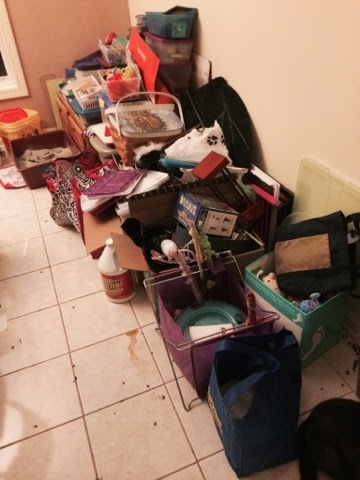But ironically, for people with chronic health or memory problems, one of the most frustrating parts of organizing your home is remembering where you put everything.
It is great if you have decluttered and now have all the items a room all tucked neatly in their new homes. But if you think you are going to be able to remember where all these new homes are, forget it.
It is time to meet your new best friend: the label. By labeling your various bins, baskets and containers, you can tell at a glance where things live. This speeds up both the time it takes to find it and the time it takes to put it away when you are done with it. It also helps other people who are not inside your head figure out where to find anything.
There are so many different ways to label things that your imagination is really the only limitation. You can hand write labels and stick them on with tape, print them from a computer, use a label maker, create an elaborate handmade hanging tag, you name it. All are good choices.
But my current labeling obsession is chalkboard tape. I love it. It is an adhesive tape with a chalkboard surface. You can cut it to whatever size you need and write on it with either regular chalk, or as I prefer to use, a chalkboard pen.
The main reason I like this is because it is so easy to change the label. I started using this tape for labels when we were organizing Paige's room. Organizing a kid's room is a challenge because as soon as you think you have stuffed everything in a bin, more stuff shows up. This lead to lots of changes in where we decided to store things and what bins worked best for what.
With the chalkboard tape, any time we changed our mind about what went in a bin, we could just wipe off the label and rewrite it. The one drawback to the chalkboard tape is that the adhesive on the back is not that strong so it does not always stick well to fabric bins or baskets so you might have to restick it every once in a while.
My other current favorite choice for labels is Post it brand label roll. It is basically a big continuous roll of fully adhesive post it note in a tape dispenser. It sticks better than the chalkboard tape to some surfaces and can be easily removed from a bin but the label itself can not be wiped clean. I just use a sharpie on it and slap the label where needed.
It is not as pretty as the chalk board tape in my opinion, so I tend to use this more on things that are out of sight.
What ever you use, I suggest you stick to one or two labeling styles. Why? Because it is very likely that at first you will be organizing with a collection of mismatched bins, baskets and containers. (Remember, we are not running out to buy a bunch of expensive matching containers before we know what we are storing and that the system works for us, right?).
Below are some of the various containers we used to organize Paige's room. Her room is far from perfect and everything is stored on mismatched furniture. She is at an age where her style is going from kid to tween to teen so we are not buying any new furniture until she figures out exactly what her new style will be.
In the mean time, using the chalkboard labels helped tie the look together more, made it so she could actually find her toys to play with them and wonder of wonders, put them away!
So learn to embrace labels. They can be an invaluable tool to help keep your space organized. I will warn you that your friends and family might make fun of you for turning into a label crazy lunatic who labels anything that sits still for a minute.
But as long as you are not trying to label the cat, dog or any other living being, I say ignore them and go for it.













